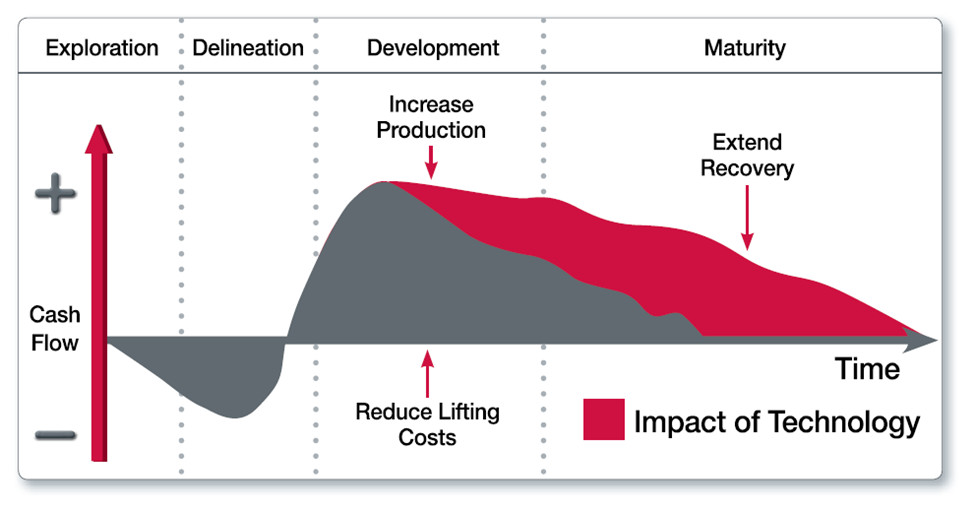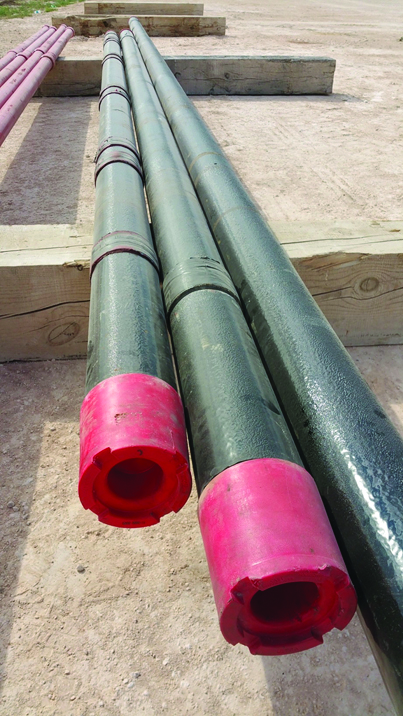The cost of finding and developing oil and gas assets involves significant investments that may not always be economically feasible. Consequently, the rejuvenation of existing oil and gas assets becomes a cost-effective option for operators seeking to maintain or increase production rates during a downturn.
Aging wells often face casing integrity problems that place critical constraints on ongoing operations and often lead to reduced production efficiency. Additionally, wells may require intervention to stimulate untapped pay zones or increase production from existing ones. Casing integrity restoration is a fundamental step in the rejuvenation process.

Casing integrity problem
At some point, most wells will likely be exposed to casing integrity threats such as corrosion, split or parted casing, or connection leaks. When appropriate, expandable liners can solve these problems predictably and economically. The length of the liner can be adjusted to cover specific intervals. In addition, because expandable liners do not need to be cemented or drilled out, they can be installed in a single trip. By providing an adaptable, single-trip option for casing integrity restoration, expandable liners enable operators to return the well to full production with a substantially lower investment of time and production costs.
Weatherford MetalSkin expandable liner systems provide a larger inside diameter (ID) than conventional casing repair solutions such as straddle packers and conventional liners. This increases the operational envelope, enables the operator to run larger completion tools and ultimately optimizes production.
When compared to a cement squeeze, the expandable liner technology provides greater long-term reliability, reduces risk, enhances production and is more cost-effective. In many cases, the installation of a solid expandable liner costs less than a single cement squeeze. The savings are even greater when multiple squeezes are required to isolate the problem. Over time, cement can break down, which means the well may require multiple squeezes and a second or even third remediation effort.
In 2012 a well on the Alaska North Slope that had been drilled and completed in 1998 failed a mechanical integrity test and was shut in. In 2015, the operator developed a plan to recomplete the well using coiled-tubing drilling. The operator discovered a leak between 316 m to 325 m (1,037 ft to 1,065 ft) and contacted Weatherford, which recommended a 5.5-in. x 7-in., 26-lb/ft cased-hole expandable liner. The team set the liner, which has a post-expansion ID of 5.525 in. with 5.433-in. drift. With casing integrity restored, the operator was able to complete the well.
Refracturing option
The simple reason to refracture a well is to boost production. This can be achieved by restimulating existing zones, contacting new rock, adding perforations, improving conductivity, replacing proppants or reorienting existing fractures. Typically, existing perforations must be isolated to achieve an effective refracture treatment. Mechanical diversion methods such as expandable liners enable accurate isolation, which helps ensure uniform proppant injection into new and existing perforations.
Refracturing operations require high-pressure-rated equipment. The internal pressure rating of an expandable liner can be increased significantly by reducing the annulus between the liner outer diameter (OD) and the production casing. This can be achieved by ballooning the liner OD to the point that it comes into contact with the production casing or by filling the annulus with an incompressible material.
An operator in the Permian Basin needed to restore casing integrity prior to fracturing a well with two compromised areas in the 7-in., 32-lb/ft casing and a leaking differential valve tool. The operation required high breakdown and treating pressures. Weatherford recommended using fully wrapped, coated joints of its cased-hole liner, which increase the pressure rating of the system to the levels required for the fracturing operation. The team deployed a 47-m (154-ft) pre-expanded liner to provide sufficient coverage and to restore pressure integrity. After expanding the liner to an ID of 5.33 in. with a 5.242-in. drift, the team tested the well to 9,900 psi with no bleed off.

Stimulating untapped zones
Production zone depletion and water influx are two of the greatest challenges encountered in mature wells. These factors not only reduce production efficiency but also increase separation and disposal costs. Fortunately, operators have a tremendous opportunity to reverse declining profits by leveraging existing infrastructure and targeting untapped zones.
Wellbore integrity must be secured before perforating and completing new zones. Weatherford expandable technology offers a wide range of options―from standard liners to corrosion-resistant materials to high-pressure systems―to seal off old zones before stimulating new ones. The large ID of solid expandable systems enables greater operational flexibility when designing completions. Depending on the application and selected product, the ID restriction ranges from 0.3 in. to 0.8 in., resulting in a larger hole size when compared to other mechanical isolation methods.
An operator in the mid-continental U.S. wanted to recomplete a lower production zone in the Goodwin Formation at 1,768 m (5,800 ft). The target area was below the Sims zone and had watered-out perforations. After reviewing the caliper logs and consulting with the operator, Weatherford ran a pre-expanded joint of 5.5-in. x 7-in. MetalSkin cased-hole liner. The resulting liner ID of 6.366 in. with a 6.241-in. drift enabled the operator to efficiently recomplete the well and start producing from a deeper zone.
Higher oil and gas commodity prices incentivize operators to focus on exploration and development of new wells. However, when the industry faces difficult times, it is often more cost-effective to rejuvenate existing assets.
Any effort to improve production returns from existing wells must consider wellbore integrity restoration. Conventional remediation techniques such as cement squeezes, chemical diverters, straddle packers and conventional liners are not the most efficient solution in certain applications. Alternative technologies such as expandable liners can present an economical solution for operators looking to maintain or increase production rates in existing assets around the globe.
Recommended Reading
E&P Highlights: March 31, 2025
2025-03-31 - Here’s a roundup of the latest E&P headlines, from a big CNOOC discovery in the South China Sea to Shell’s development offshore Brazil.
EOG Ramps Gassy Dorado, Oily Utica, Slows Delaware, Eagle Ford D&C
2025-03-16 - EOG Resources will scale back on Delaware Basin and Eagle Ford drilling and completions in 2025.
E&P Highlights: March 10, 2025
2025-03-10 - Here’s a roundup of the latest E&P headlines, from a new discovery by Equinor to several new technology announcements.
Ring May Drill—or Sell—Barnett, Devonian Assets in Eastern Permian
2025-03-07 - Ring Energy could look to drill—or sell—Barnett and Devonian horizontal locations on the eastern side of the Permian’s Central Basin Platform. Major E&Ps are testing and tinkering on Barnett well designs nearby.
Expand Lands 5.6-Miler in Appalachia in Five Days With One Bit Run
2025-03-11 - Expand Energy reported its Shannon Fields OHI #3H in northern West Virginia was drilled with just one bit run in some 30,000 ft.
Comments
Add new comment
This conversation is moderated according to Hart Energy community rules. Please read the rules before joining the discussion. If you’re experiencing any technical problems, please contact our customer care team.





